Hi everyone! I wanted to share a quick little science experiment you can do right at home! We’re learning all about plants right now, and so we did this cute experiment to show the kiddos how the stem of the flower pulls up water and nutrients to feed the flower.
Plants have roots which absorb water from the soil. The water travels through the roots and up the stem and into the leaves. The leaves gather sunlight, then use the sunlight, carbon dioxide, and water to make food for the plant in a process called photosynthesis. Cut flowers don’t have roots, but the water still moves up the stems and into the leaves giving a nice visual to how the process works.
What you will need:
- White Daisies or Carnations (However many you’d like to use, we did four)
- Glass Mason Jars
- Food Coloring or liquid watercolors
(We used food coloring, but I think the liquid water colors give a brighter end result.)
Experimentation Time!
First we filled our mason jars about half way with water. Then added one color of food coloring to each jar, make sure to add enough coloring to make your water quite saturated with color.
In the photo below, the third one over looks like light blue, but it’s actually purple. I didn’t put enough coloring in so I’ll have to go back and add some more so it works properly.
Next we cut the stems of our daisies with a diagonal slant to help the stem absorb more fluid, then placed them in the water.
Then the kids all filled out our Science Experiment Form to predict what would happen with the flowers.
Finally we waited…and surprisingly the flowers started changing color within about an hour. Actually the red one started to show up on the leaves first, then the blue next. The purple and green never did show up that well, so I think the stronger colored water definitely worked best.
Below you can see the blue starting to show up on the tips of this flower after about 45 minutes:
And here you can definitely see the red starting to streak across the petals of the flower after just about an hour:
By the end of the day the color was definitely visible in varying degrees with the red and blue showing the best. This is a great hands-on science experiment to show how essential roots and stems are to plant growth.
Have some fun kids science experiment ideas? Make sure to leave a comment below!


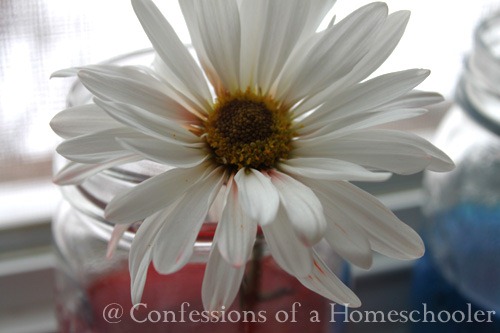
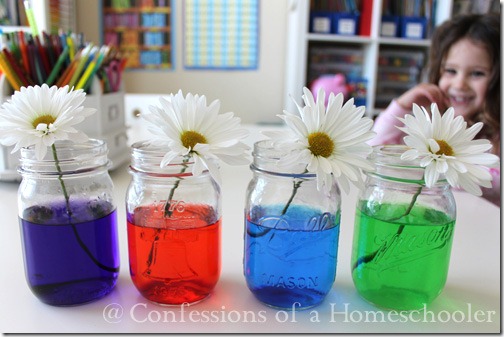
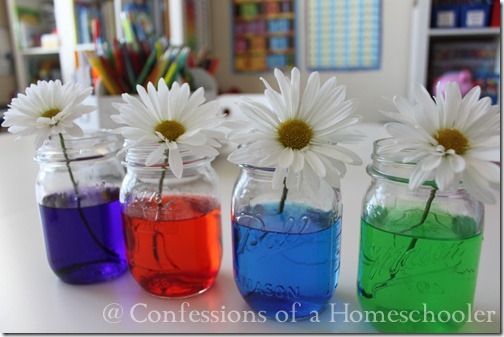
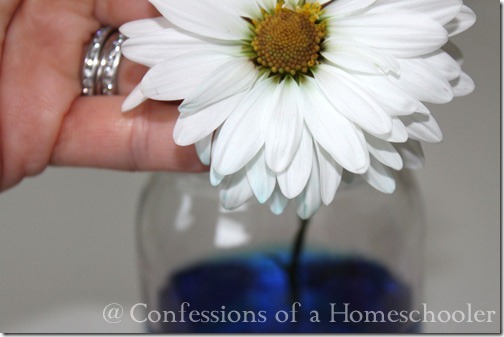
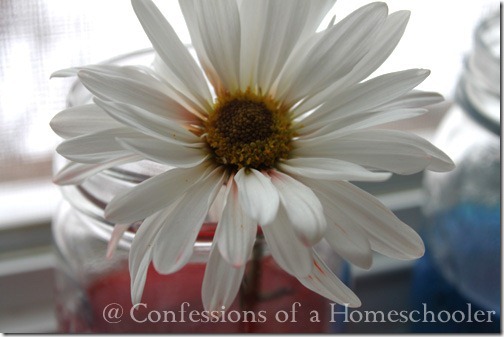
My boys brought home this project from Cub Scouts using celery. But wow the flowers are so beautiful. I think it is probably easier to see on the white petals. Definitely need to redo this! Ironically, the celery in purple did not work at all either but the blue did. Hmmm.